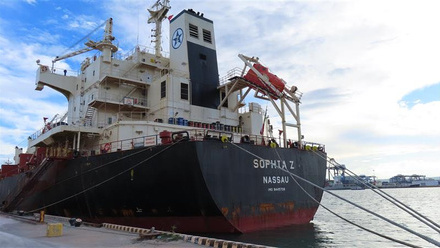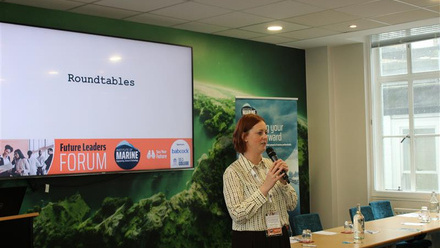Solving the seafarer shortage
Seafarer supply is lagging behind demand, putting workers and vessels at risk. Changing aspirations are making recruitment harder than ever – but upskilling and career progression could offer one solution.
For ship operators, it was no surprise that Drewry’s 2023/24 Manning Annual Review and Forecast found that seafarer labour shortages are at a 17-year high. It is the latest in a line of reports highlighting that while global demand for shipping has increased over the years, recruiting and retaining seafarers is much more challenging than ever before.
“Ships are still sailing, but if the supply doesn’t improve significantly, there could be problems,” says Rhett Harris, senior manning analyst at Drewry. Those problems could eventually result in vessels being stuck at port, but vessels could increasingly sail with skeleton crews before then. The result – seafarers become overworked. Vessel maintenance may take a back seat, resulting in more significant repair jobs in dry docks. In a worst-case scenario, accidents will become more frequent.
Supply and demand
Although seafarers come from across the world, some countries supply a greater proportion than others. Among the major seafarer supply countries, intake numbers vary.
“In India and the Philippines, the government provides excellent support to seafarers, so their intake is actually good,” says Harris. China is also one of the major supply countries seeing good intake. Chinese seafarers tend to favour Chinese-flagged vessels however, so are less likely to contribute to the global supply.
Some supply countries are seeing declining rates. Among the most prominent are Russia and Ukraine – a trend that is unlikely to change until the war in Ukraine ends.
For some, it isn’t the number of seafarers available globally that matters but the number of seafarers available in a particular country. For example, “the USA has the Jones Act, which says any vessel starting a voyage from a US port and finishing voyage in a US port has to have US National seafarers on board,” says Harris. “In a way, they’re self-limiting.”
Changing aspirations
Regardless of whether seafarers from a particular country are needed or not, recruitment has to be a priority if current – let alone projected – demand for seafarers is to be met. Seafaring needs to be seen as an attractive option. One of the biggest challenges is the extended periods spent at sea. “You're away for several months, and then you come back, and things are normal for a few months, and then you go away again,” Harris says.
Historically, long periods away were more of an issue for women, who were often expected to be at home (especially if they had children). However, men are increasingly finding an away-from-home lifestyle less attractive. Part of this relates to changes in family dynamics, with men taking on a greater role in family life than they would have done 50 or even 10 years ago.
It also partly relates to changes in aspirations. Long work hours, small, often shared and uncomfortable cabins, unpleasant tasting water, and few entertainment options certainly don’t suit everyone. Then there is the issue of connectivity. “Young people now have grown up in a connected world, so they've always had the Internet,” Harris points out. “Now they’re going to go away and be completely disconnected.”
Fortunately, life on board is improving, particularly in the higher-earning sectors. “Companies are looking at better food, better entertainment. So some ships have gyms, a library, some might have a little cinema room,” says Harris.
Perhaps one of the most dramatic changes is the ability to have Internet connectivity, allowing seafarers to stay in touch with family and friends and stay connected with world events. However, for the most part, connectivity on board is often slower and less reliable than on land. It is also much more expensive, and seafarers often face data use limitations. Developments like Starlink from SpaceX could help drive costs down and resolve issues like speed and reliability.

Getting on board
For many, seafaring is still a financially attractive option. Wages are often good, and depending on the seafarer's country of residence, they may not need to pay any tax. If the seafarer doesn’t have a mortgage and doesn’t rent permanent accommodation at home, housing and other living costs are also reduced.
The profession can also be attractive to those who wish to travel extensively. Today, the ability to take shore leave or disembark can be hampered by visa requirements however. As Harris points out: “If you're on board a vessel for months at a time, and you can’t get off, that’s not great.”
Visa requirements may only present an issue for some nationalities. The USA, Canada and Australia, for example, offer rapid electronic travel authorisations for some nationalities, while requiring full visa applications for others.
During the Covid-19 pandemic, shore leave and even returning home became highly problematic. “For those on board, especially those closer to retirement, I think it pushed them to leave,” says Harris.
With the plight of seafarers during the crisis gaining media attention, the events may have also hampered recruitment. “You have people looking from the outside thinking, ‘Do I want to do a job that can potentially result in that situation again?’”
Covid-19 also presented another problem for recruitment. Training programmes, which are often classroom-based, stopped running. “It reduced the flow of recruits, while you had people retiring or moving out of the industry,” Harris says.
One positive that did arise was the increase of programmes that can be taken either partially or fully online. This approach offers greater flexibility and accessibility for those looking to enter the industry. It also allows existing seafarers more opportunities to ‘skill up’ and progress in their careers, and to keep abreast of new developments, such as alternative fuels.
Highlighting and facilitating upskilling and career progression is one area Harris suggests could be improved to support recruitment and retention. “It’s not just a case of ‘You’re operating a ship, and then you retire’,” Harris says. “You can be a superintendent on shore. You can be an HR professional to seafarers. You can do strategy in head office.”
Resolving the seafarer shortage is not a simple affair, nor can it be solved by any one sector alone – but it is a challenge that must be met sooner rather than later.






